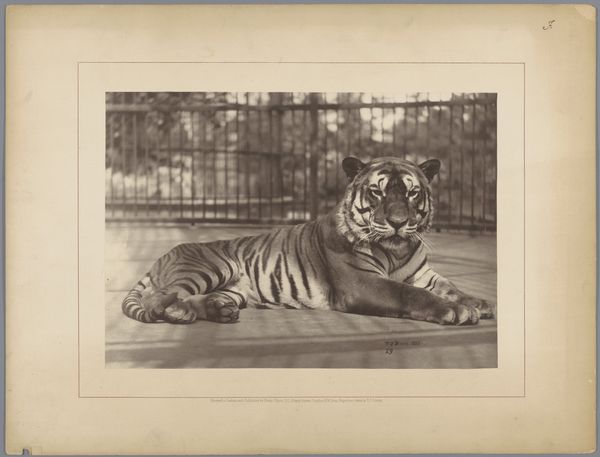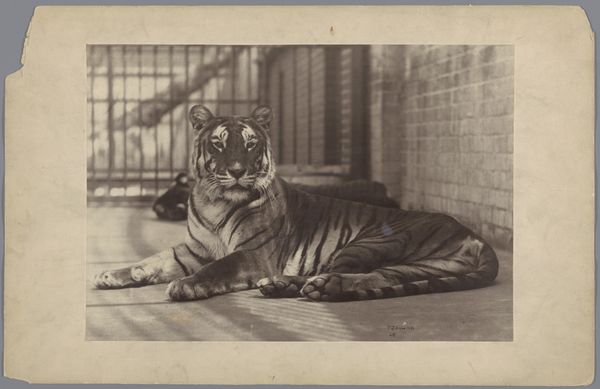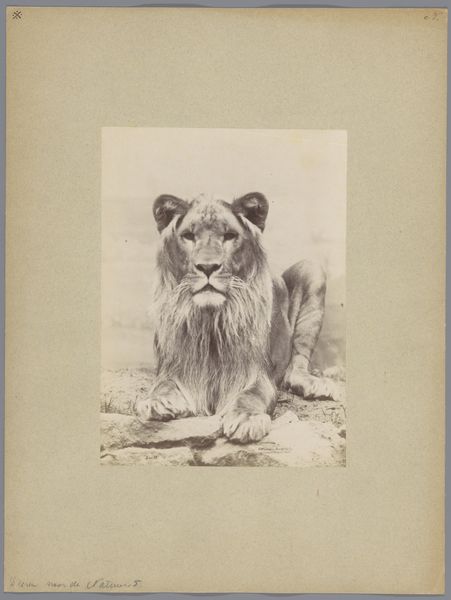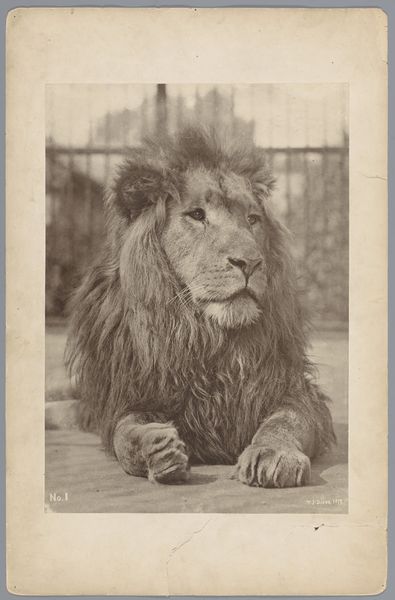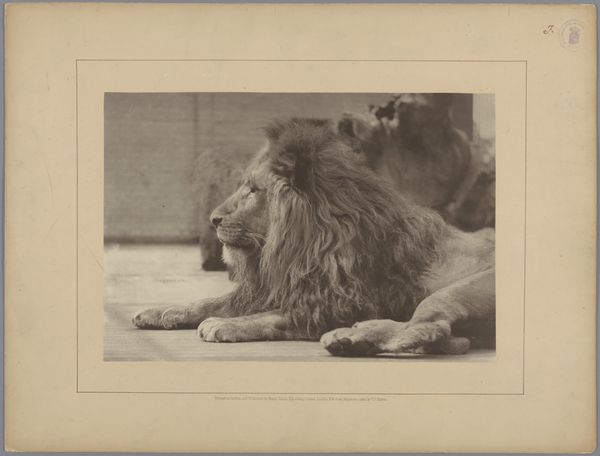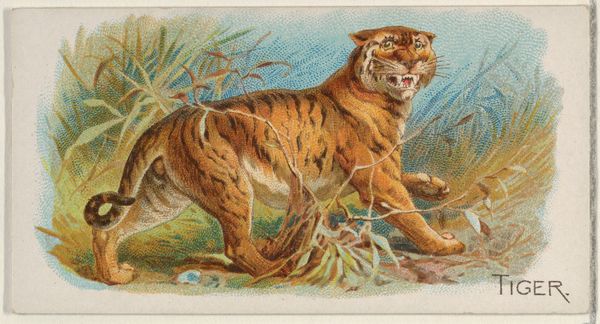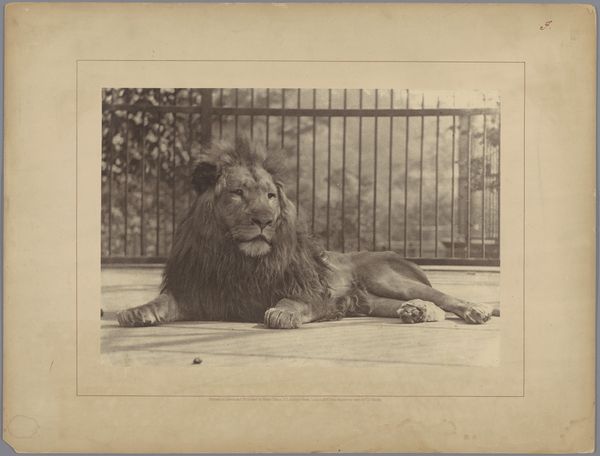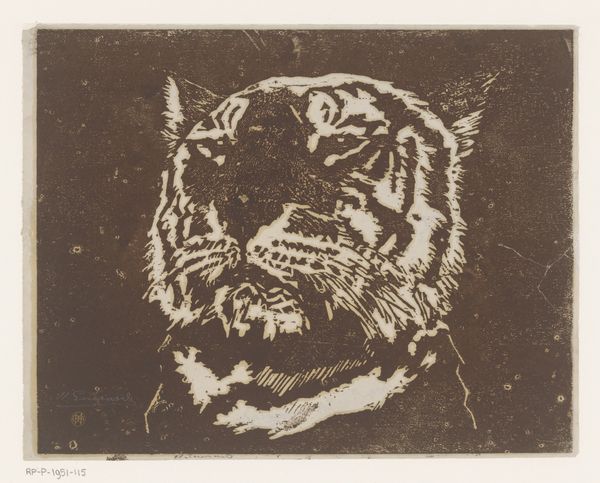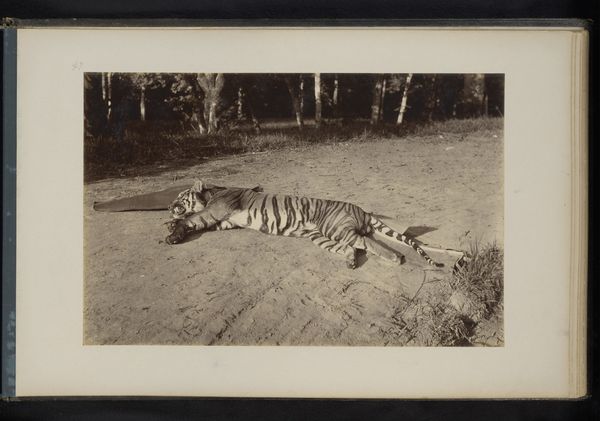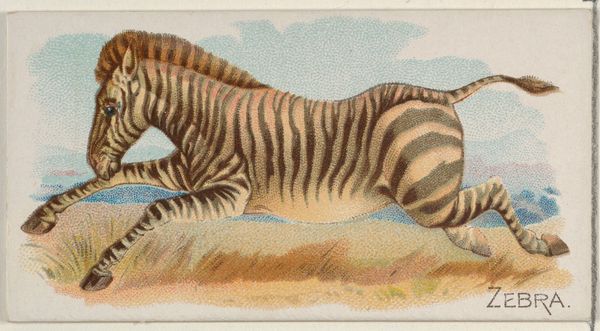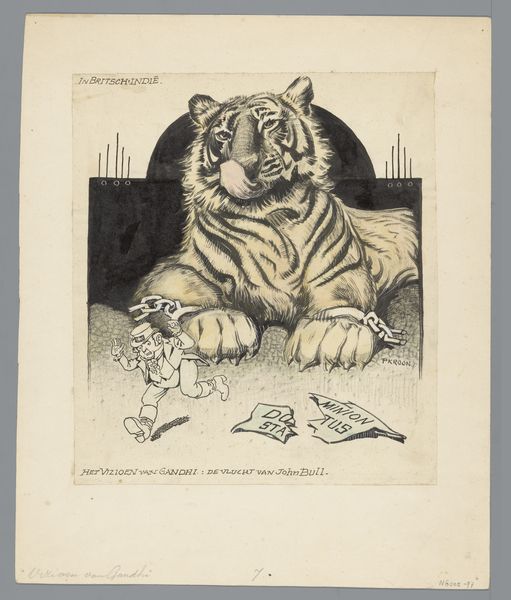
photography, gelatin-silver-print
#
16_19th-century
#
photography
#
pencil drawing
#
coloured pencil
#
gelatin-silver-print
#
19th century
#
realism
Dimensions: height 352 mm, width 248 mm
Copyright: Rijks Museum: Open Domain
Curator: What strikes me most immediately is the incredible stillness captured in this photograph. There's a weightiness to it. Editor: Precisely! That controlled pose lends a great sense of strength and a subdued grandeur. Let's dive in. This gelatin-silver print, titled "Tijger," or "Tiger" in Dutch, was created circa 1880 by Thomas James Dixon and is now part of the Rijksmuseum collection. Curator: The animal gaze is profound, conveying a sort of silent knowing. The tiger as a symbol of raw power is almost universally recognized. Consider its frequent use in heraldry, flags and cultural symbols where the tiger stands for courage, prowess and sometimes, untamed nature. This animal transcends mere zoological interest, entering the realm of archetype. Editor: Note also how Dixon uses the grayscale to emphasize the stark contrasts between the tiger's stripes, building texture through tonality. Light and shadow are carefully employed to shape the contours of its face, giving a sculptural presence on a flat surface. The almost symmetrical composition with a slight three quarter angle puts the viewers face to face with the creature. Curator: The very act of photographing such a powerful creature speaks to a particular moment in time. Nineteenth-century photography often became a tool for understanding and cataloging the natural world and the unfamiliar. Was the animal held captive? This single frame becomes loaded with ideas about colonial encounters and scientific pursuit, suggesting humanity's impulse to dominate, even if beautifully. Editor: Yes, the photograph seems a quiet document to be certain, but Dixon also shows us the intrinsic aesthetic patterns in nature. Through considered photographic artifice the subject becomes an image of contemplation; the artist's meticulous printing brings a sculptural quality to a medium usually associated with fleeting impressions. Curator: A testament to both wildness and artifice. Editor: Exactly, it’s about structure, but so much feeling too!
Comments
No comments
Be the first to comment and join the conversation on the ultimate creative platform.
